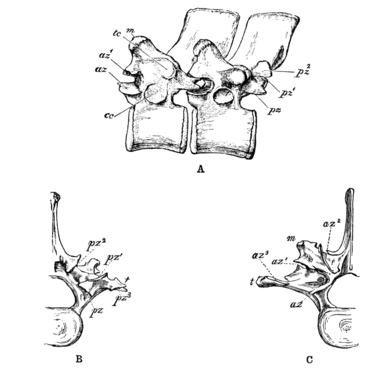
Fig. 89.—Great Anteater (Myrmecophaga jubata). A, Side view of twelfth and thirteenth thoracic vertebrae. B, Posterior surface of second lumbar vertebra. C, Anterior surface of third lumbar vertebra, × ⅔. az, Anterior zygapophysis; az1, az2, az3, additional anterior, articular facets; cc, facet for capitulum of rib; m, metapophysis; pz, posterior zygapophysis; pz1, pz2, pz3, additional posterior articular facets; t, transverse process; tc, facet for articulation of tubercle of rib. (From Flower's Osteology.)
The first of these characters is the series of additional zygapophyses on the posterior dorsal and lumbar vertebrae; these are very clear in the Anteaters and Armadillos; less clear, but still obviously represented, in the Sloths. In the second place, they all possess a clavicle, rudimentary, it is true, in the Great Ant-bear, but still present. Thirdly, the testes are abdominal throughout life, a character which they share with such lowly-organised animals as the Monotremata and the Whales. Finally, and this is by no means a matter to be overlooked, not only are all the existing members of this group American in range, but there is no evidence to prove that they have ever existed elsewhere. No European or Old-World repre-
